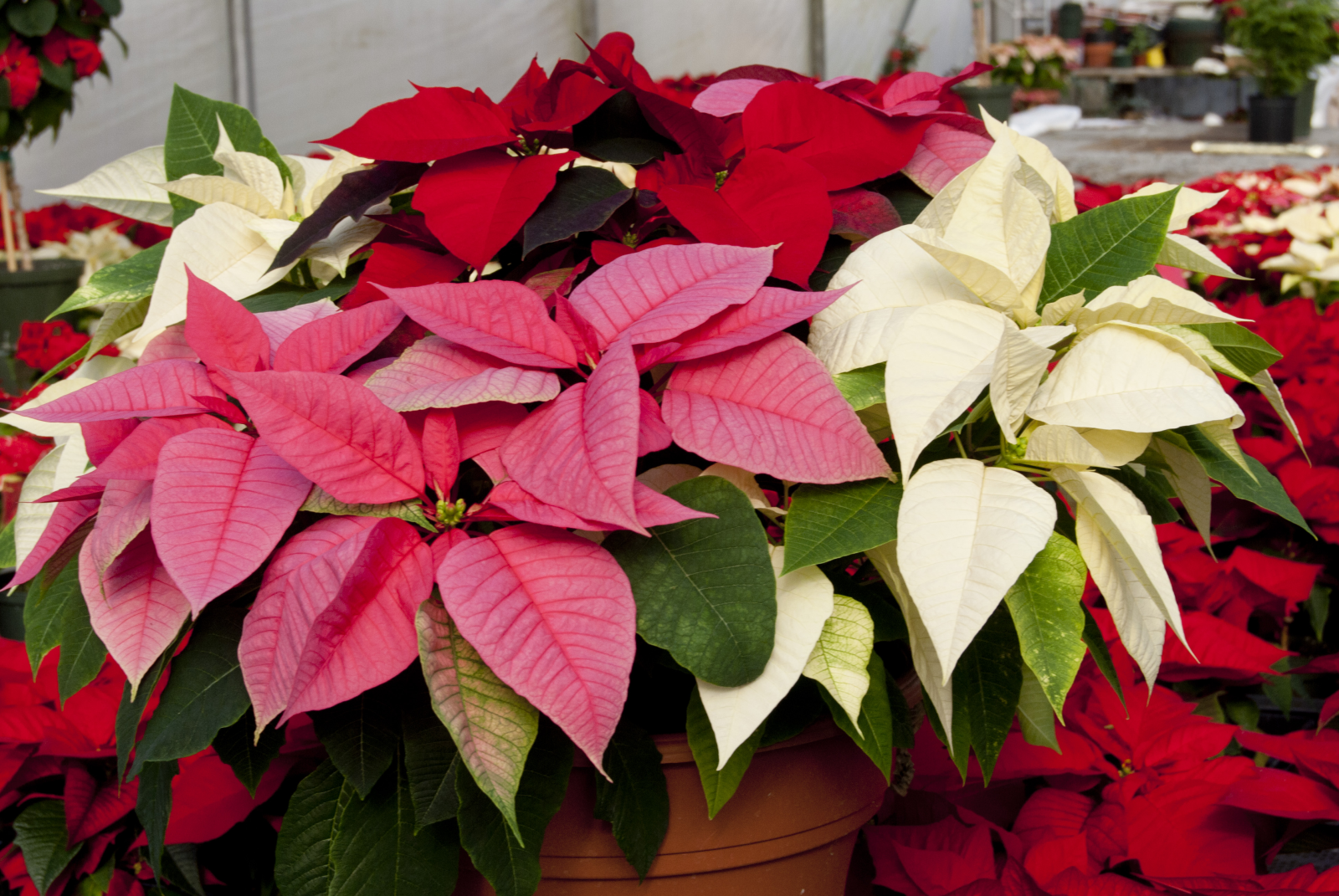This news item expired on Friday, December 15, 2017 so the information below could be outdated or incorrect.

Poinsettias are a beautiful symbol of the season. Here are some tips on selecting and caring for a plant that will last well into the new year:
- Select a healthy plant that's not too mature. The little yellow buds in the center of the colored bracts are actually the flowers. If the flowers are shedding pollen or falling off, the plant is past its prime.
- Make sure the leaves are healthy. They should have a good dark green color with no browning around the edges. If leaves are falling off, the plant won't last long.
Keep it Healthy
- Place your poinsettia in indirect light after bringing it home. Poinsettias need six hours of light daily (fluorescent light will work).
- Keep your plant away from cold windows, warm or cold drafts from furnaces or air conditioners, and open doors and windows.
- Poinsettias do best at daytime temperatures of 65 to 70 degrees. Higher temperatures will shorten the plant’s life.
- Check the soil daily. Punch holes in the pot’s foil cover so water can drain into a saucer. Water the plant when the soil is dry. Allow water to drain into the saucer and discard excess. Wilted plants will tend to drop bracts sooner.
- Don’t fertilize poinsettias while in bloom. If kept past the holiday season, apply a houseplant fertilizer once a month.
- New varieties of poinsettias last longer. It’s not uncommon for poinsettias to retain their bracts for several months.
Bet You Didn't Know...
- The poinsettia, a tropical shrub, grows natively in Mexico and Central America. The Aztecs called it cuetlaxochitl or “star flower.” The red petals – actually bracts or modified leaves – were used for dye.
- Joel Poinsett, the first U.S. ambassador to Mexico, is credited with introducing the plant to this country in 1828. He raised the plants in his South Carolina greenhouse and gave them to friends. National Poinsettia Day is celebrated December 12, the anniversary of Poinsett’s death.
- The red or otherwise colored bracts frame the plant’s actual flowers, which appear as yellow clusters at the center of the bracts. The plant drops its bracts and leaves soon after those flowers shed their pollen. For the longest-lasting poinsettias, choose plants with little or no yellow pollen showing.
- Contrary to popular belief, poinsettias are not poisonous to humans or pets.
- Poinsettias are not frost-tolerant. They will grow outdoors in temperate coastal climates, such as Southern California beach communities. In the ground, they can reach 10 feet tall.